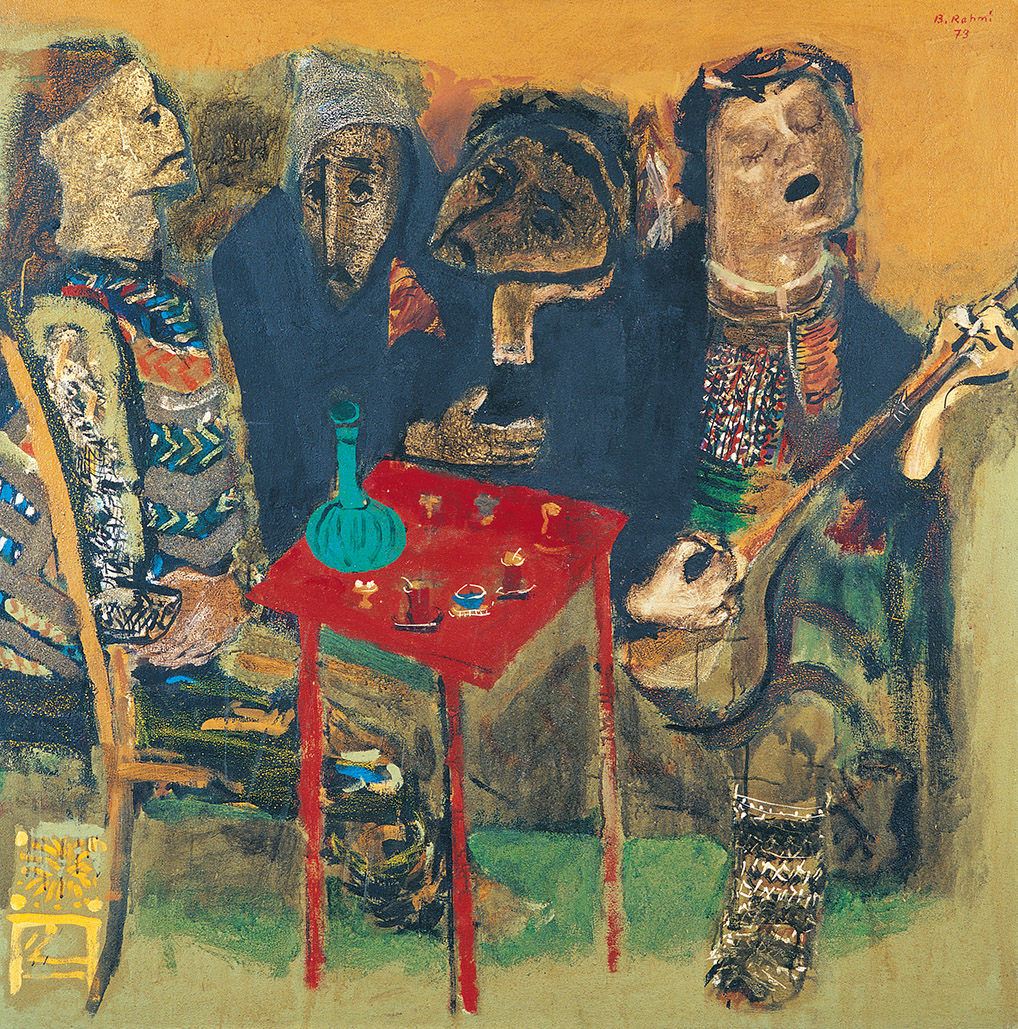- Open Today: 10.00–18.00
- Ticket
- Shop
- Membership
- TR EN

Bedri Rahmi Eyüboğlu, 1911-1975
Coffeehouse, 1973
Bedri Rahmi Eyüboğlu took lessons from Zeki Kocamemi while he was in middle school in Trabzon, and in 1927, went to Istanbul. He worked at the studios of Nazmi Ziya and İbrahim Çallı at the Istanbul Academy of Fine Arts. Afterwards, Eyüboğlu went to Paris, where he worked at the studio of André Lhote. Eyüboğlu has a special place in the history of painting in Turkey because he never refrained from taking chances or experimenting. He trained numerous students and artists at the Academy, where he remained a professor until his death in 1975.
What makes Eyüboğlu such an outstanding figure in the history of Turkish painting was his constant experimentation. He effectively employed a number of different techniques, producing work that successfully brought together his versatility in painting, mosaics, ceramics, murals, calligraphy, engraving, and serigraphy.
Completed two years before his death, “Coffeehouse” effectively sums up the experiences and influences of a career that lasted over half a century. The viewer can easily identify the influence of Matisse and Dufy from the Paris years, particularly in the selection of colors such as the vibrant red of the little table at the center. The striking folkloric elements of the figures, which became increasingly apparent in his work of the 1960s, can also be traced back to his “Homeland Tours” experience. With his characteristic terseness, Eyüboğlu induces the viewer to think about his painting by observing the various ways in which he has drawn his figures. While the two sitting behind the table look weighed down by the cares of the world, the figure to the left stares straight ahead with a detached calmness and the figure to the right seems oblivious to everything but his own music.
Painting
Acrylic on canvas
125 x 125 cm
Dr. Nejat F. Eczacıbaşı Foundation Collection
Istanbul Museum of Modern Art / Long term loan